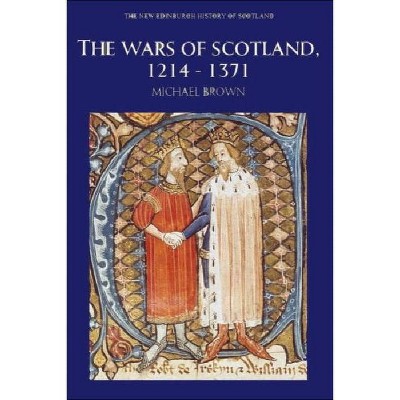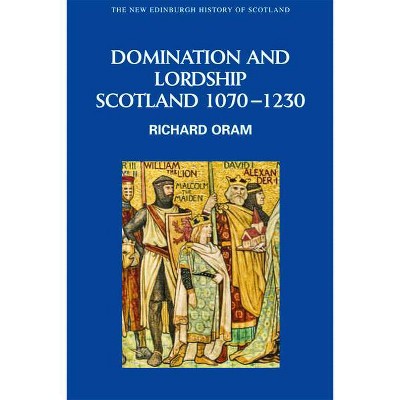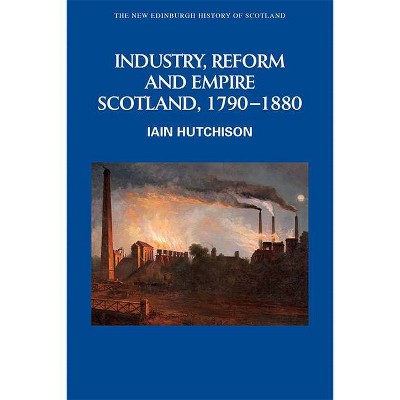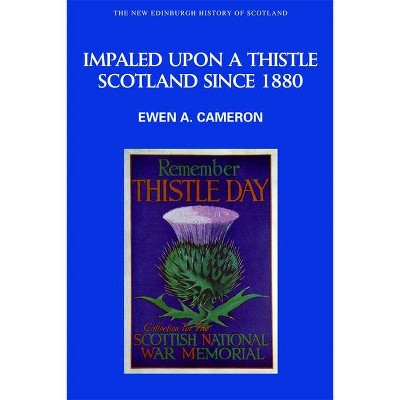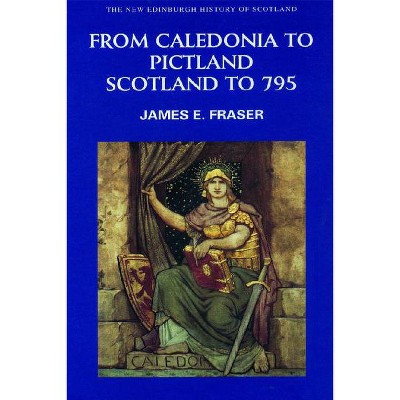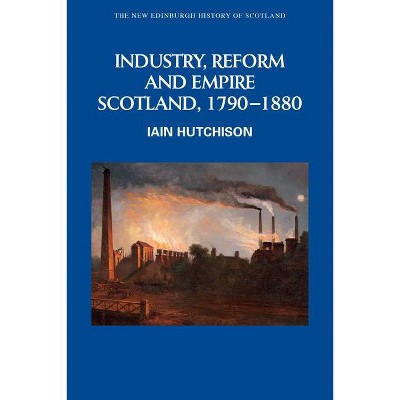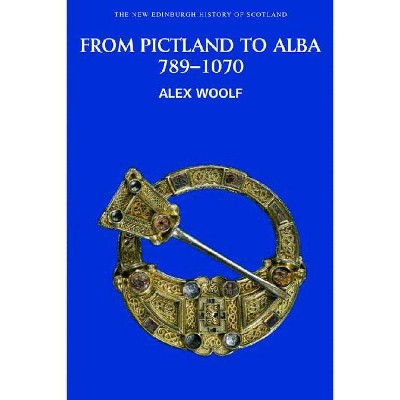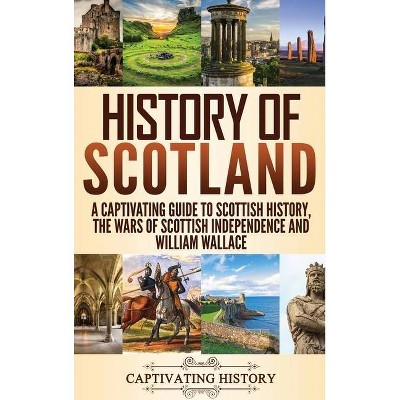Scotland Re-Formed, 1488-1587 - (New Edinburgh History of Scotland) by Jane Dawson (Paperback)
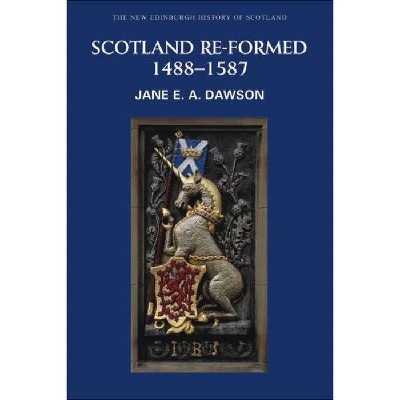
Similar Products
Products of same category from the store
AllProduct info
<p/><br></br><p><b> About the Book </b></p></br></br>This book encompasses the long sixteenth century, starting with James IV's accession and concluding with Mary, Queen of Scots' execution. At its heart is Scottish political life viewed from local and regional perspectives as well as the centre.<p/><br></br><p><b> Book Synopsis </b></p></br></br>From the death of James III to the execution of Mary, Queen of Scots, Jane Dawson tells story of Scotland from the perspective of its regions and of individual Scots, as well as incorporating the view from the royal court. Scotland Re-formed shows how the country was re-formed as the relationship between church and crown changed, with these two institutions converging, merging and diverging, thereby permanently altering the nature of Scottish governance. Society was also transformed, especially by the feuars, new landholders who became the backbone of rural Scotland. The Reformation Crisis of 1559-60 brought the establishment of a Protestant Kirk, an institution influencing the lives of Scots for many centuries, and a diplomatic revolution that discarded the 'auld alliance' and locked Scotland's future into the British Isles.Although the disappearance of the pre-Reformation church left a patronage deficit with disastrous effects for Scottish music and art, new forms of cultural expression arose that reflected Protestant sensibilities or were transposed to secular settings. Alongside the dramatic events and slow transformations of cultural, social, economic, political and religious life, in 1587 much remained as it had been in 1488, with Scots deeply rooted in their country through their abiding sense of people and place. Key Features: - Distinctive regional approach brings a fresh perspective to the century's political and religious events- Compelling new interpretation based upon the complex inter-relationship of crown and church, helps students make sense of the upheavals brought to Scotland by the Renaissance and Reformation- Careful integration of visual, artistic and material culture enlivens and enriches students' understanding of Scottish life<p/><br></br><p><b> From the Back Cover </b></p></br></br>Scotland Re-formed, 1488-1587 Jane Dawson From the death of James III to the execution of Mary, Queen of Scots, the story of the Scotland is told from the perspective of its regions and of individual Scots, as well as incorporating the view from the royal court. This book explains how the country was re-formed as the relationship between church and crown changed, with these two institutions converging, merging and diverging, thereby permanently altering the nature of Scottish governance. Society was also transformed especially by the feuars, new landholders who became the backbone of rural Scotland. The Reformation Crisis of 1559-60 brought the establishment of a Protestant Kirk, an institution affecting the lives of Scots for many centuries, and a diplomatic revolution that discarded the 'auld alliance' and locked Scotland's future into the British Isles. Although the disappearance of the pre-Reformation church left a patronage deficit with disastrous effects for Scottish music and art, new forms of cultural expression arose that reflected Protestant sensibilities or were transposed to secular settings. Alongside the dramatic events and slow transformations of cultural, social, economic, political and religious life, in 1587 much remained as it had been in 1488, with Scots deeply rooted in their country through their abiding sense of place and people. Jane Dawson is Senior Lecturer in Ecclesiastical History at the University of Edinburgh<p/><br></br><p><b> Review Quotes </b></p></br></br><br>a work of exemplary, balanced and up-to-date erudition.--Julian Goodare, University of Edinburgh "Reviews in History"<br><br>A clear narrative of an often confusing period in Scotland's past. Readable yet erudite, expansive yet detailed, Dawson's book is a fresh take on political history that will serve students well.--Mairi Cowan, University of Toronto "Scottish Historical Review"<br><br>A very welcome volume in the New Edinburgh History of Scotland series... An important book, to be secured by all serious libraries, and readers interested in this crucial period.-- "Northern History"<br><br>Dawson moves seamlessly between biography, local and regional contexts, and the events and issues of national identity... Her writing masterfully chronicles both the constancy and fluidity of these struggles for power, vengeance, and at times justice.--William VanDoodewaard, Huntington University "Journal of British Studies"<br><br>Dawson's lively style and use of individual contemporary experiences will engage the sleepiest student, while the chronological approach allows her to draw attention to the longer-term processes underlying the 're-forming' of the Scottish kingdom that will satisfy the more academically minded.--Anna Groundwater, University of Edinburgh "English Historical Review"<br><br>The approach taken here is broadly chronological, yet there is far more here than a mere recounting of the governments of monarchs or regents... Scotland Re-formed is well illustrated with many maps and tables... Scotland Re-formed should, therefore, appeal to both informed general readers and students of early modern Scottish history.--Maureen Meikle, Leeds Trinity and All Saints "Parliamentary History"<br><br>The last few decades have seen a flourishing of interest in Renaissance and Reformation Scotland, but so far an overview, bringing together the fruits of this new research, has been lacking. This volume fills the gap admirably... This lively book should be particularly useful for newcomers to the subject: the writing is consistently clear, and avoids descending into historiogrpahical controversy, while retaining an eye for detail.--John McCallum, University of St Andrews "Ecclesiastical Law Journal"<br><p/><br></br><p><b> About the Author </b></p></br></br><p>Jane Dawson is Professor of Reformation History at the University of Edinburgh.<p>
Price History
Price Archive shows prices from various stores, lets you see history and find the cheapest. There is no actual sale on the website. For all support, inquiry and suggestion messages communication@pricearchive.us
